
FREE SHIPPING ON PRECUT KIT ORDERS OF $100 OR MORE
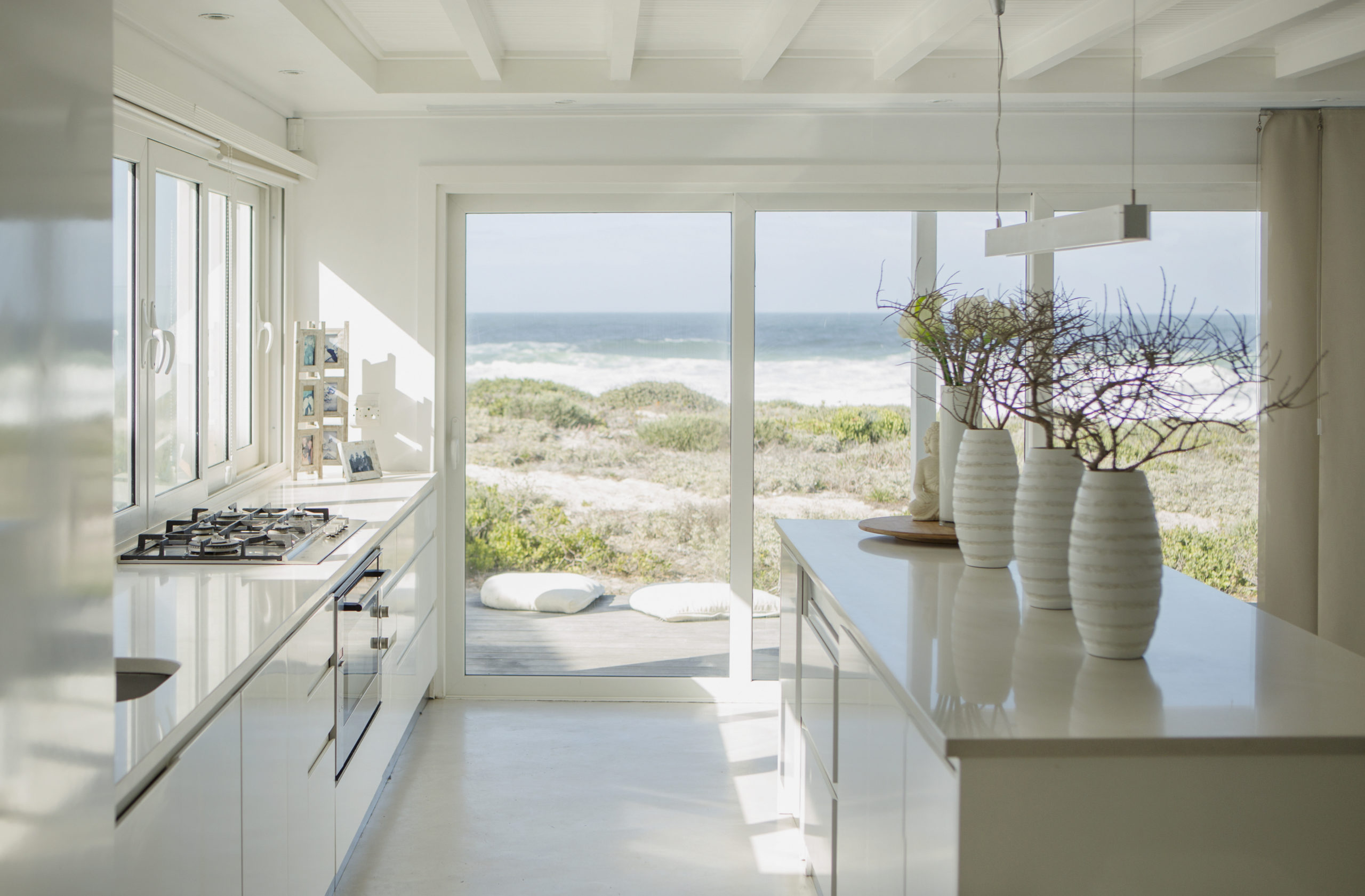
You may have heard of home window tinting or residential window film, but may be unsure of what it is and how it can benefit you and your space. Have no fear! We are here to explain all there is to know about home window tinting and how easy it is to do yourself!
Simply put, window film is a high technology product made to enhance glass performance.
It is constructed from biaxially oriented polyethylene terephthalate (BOPET), a common type of polyester used widely in clothing, packaging materials, and other films. The polyester layers are treated with components such as dyes, metals, and nanoceramic particles to reflect or absorb solar energy.
With its origins in the 1960s, window film started out as a dyed product for automobiles and buildings to prevent heat build-up in car and building interiors. The second-generation window film that was introduced in the 1990s was a hybrid version consisting of dye to absorb the sun and metallic particles to reflect the sun’s rays. This provided a step change improvement in the performance of the film, but the metallic particles could interfere with GPS and radio frequencies. Today, window film continues to evolve with the addition of ceramic window films. Using ceramic as a component eliminates the interference problem and offers beautiful, stable color and excellent solar control.
Since all types of window film are still on the market today, it’s important to note what kind of film you are buying to understand its properties and quality. Most films being sold to consumers online today are simple, inexpensive metallic films while most professionals opt to use higher-quality, ceramic film.
Finished window films are then applied to the inside surface of a window. The diagram below compares glass with and without window film to illustrate how window film works:
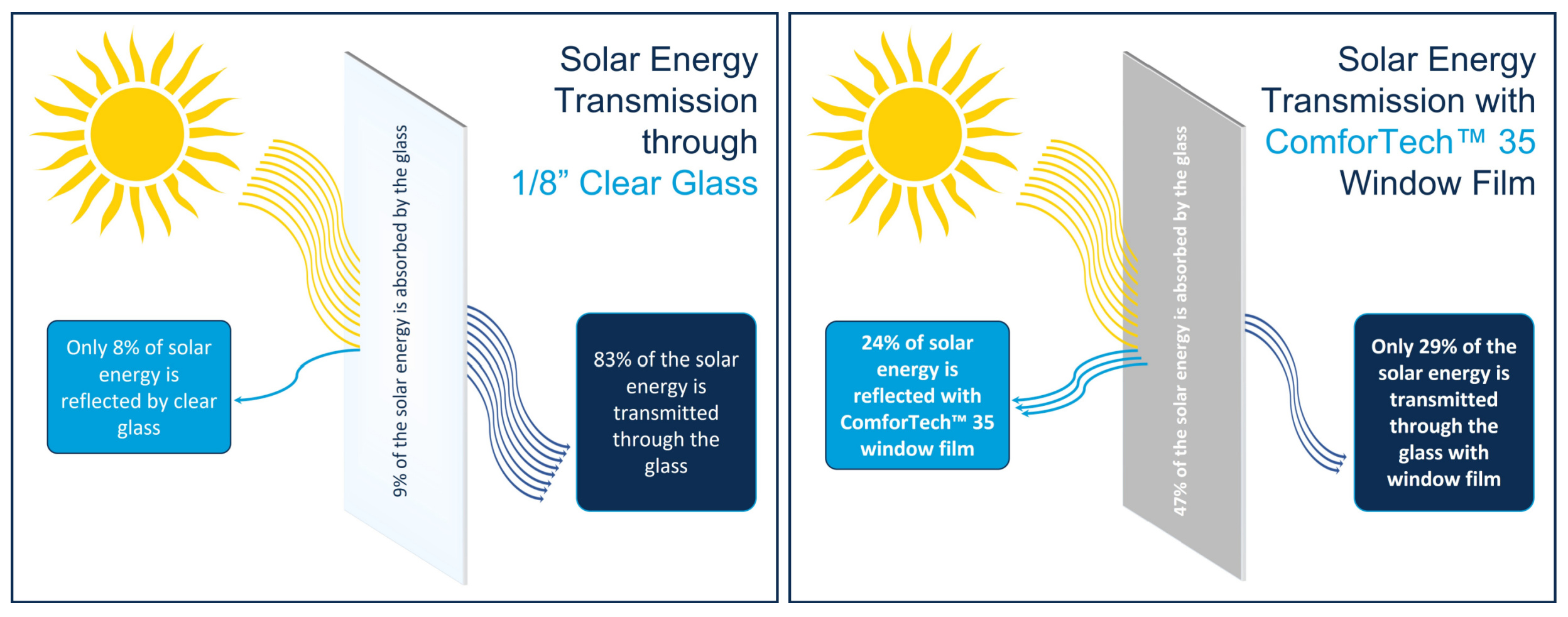
On the left-hand side, we see that the majority of solar energy that hits 1/8” clear glass will flow through directly through the glass. The right-hand side of the diagram shows glass with window film. Here you see that the window film both reflects and absorbs more energy than clear glass resulting in a fraction of the solar energy being transmitted through the window.
The performance of all window film is measured using the uniform specifications as shown in the example chart below.
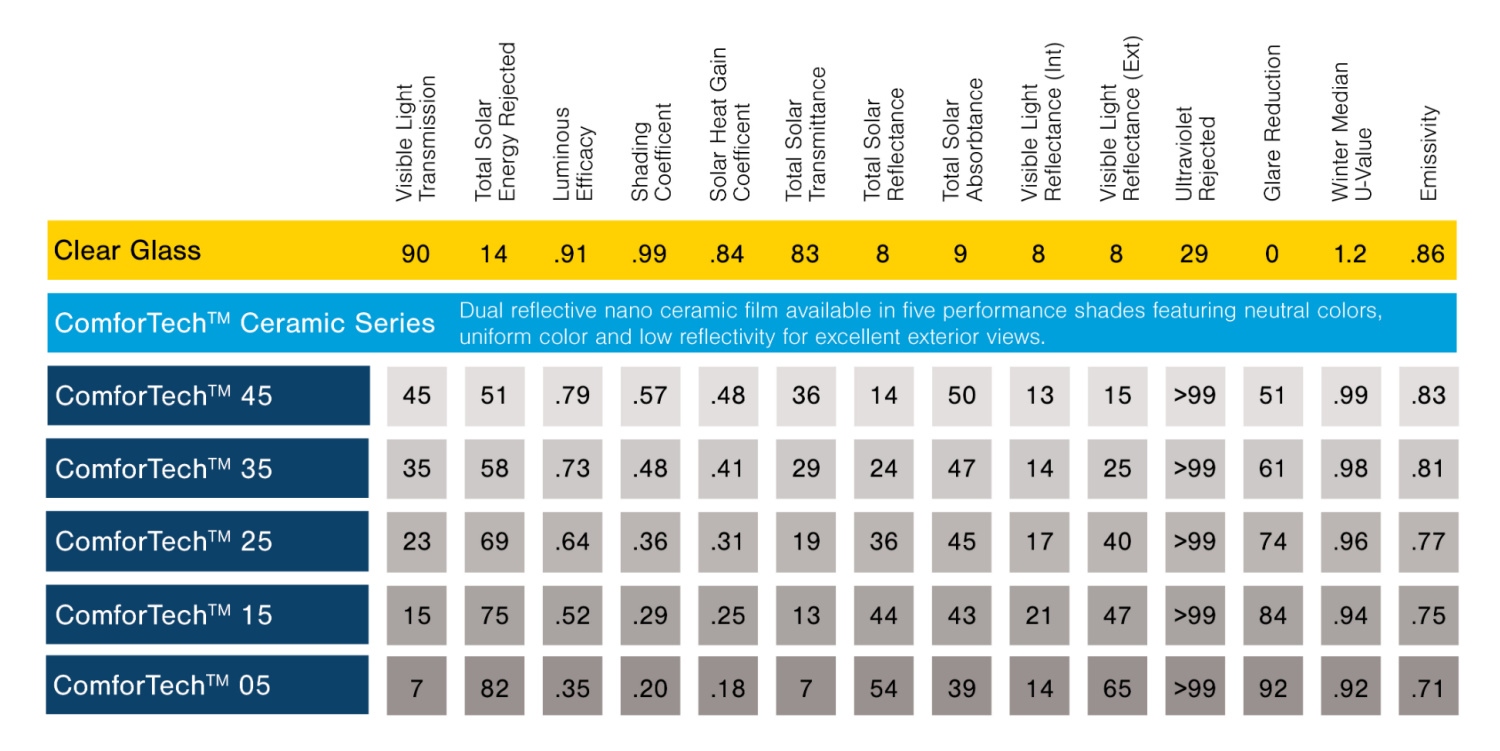
Among the most important are:
VLT is the percentage of visible light that passes through a window and into the home. The lower the number, the less visible light transmits through the window and the darker the film. For comparison, 90% of visible light passes through untreated glass.
TSER is the percentage of solar energy rejected by a window and is made up of the total solar reflectance plus the part of solar absorption which is re-radiated outward. TSER is used as a guide to how much solar energy will be rejected by a film. As reference, clear glass rejects only 14% of solar energy.
UVR is a measure of how much ultraviolet light a window film blocks.
GR is the percentage of reduction in visible light transmission through a window without film compared to that with film. The higher the value the more glare will be reduced in your space.
Besides the components used to reflect and absorb solar energy, there are a number of other characteristics that differentiate one film from another.
Ply indicates the number of separate layers of polyester film that are contained within a product’s construction. Example: a 1-ply product would consist of one single layer of polyester film where a 2-ply product would be made with two separate layers of polyester film. All of our ComforTech™ Ceramic Series films are 2 ply and 2.0MIL thick, while most other consumer brands are thinner and only 1 ply. 2 ply films are higher quality and are easier to handle and install.
Various manufacturing processes such as dip-dying, vacuum deposition, sputtering, and coating are used to produce finished window films. Our films are produced using a process called micro gravure coating. Titanium nitride particles are ground to nanometer scale and applied to the polyester in a clean room environment. The micro gravure process ensures the particles are uniformly deposited on the film to achieve optical brilliance and enhanced solar energy performance.
There are two types of mounting adhesives used with window film: pressure-sensitive adhesive and dry adhesive. Pressure-sensitive adhesives are sticky like tape. Dry adhesives aren’t sticky to the touch, are activated using water, and form a stronger bond with the window after curing. All of our ComforTechTM Ceramic Series films use a dry adhesive which is ideal for the DIY installer, eliminating the challenge of working with large pieces of sticky film. The dry adhesive also minimizes contamination from dust and airborne particles during the installation process.
Nearly all window films have some reflectivity as one of the ways to control solar energy. Simple reflective films have the same reflectivity on both sides of the film (the side facing in and the side facing out). Dual reflective films achieve their performance by creating two different levels of reflectivity. The exterior reflectivity of the film is higher than the interior reflectivity of the film. This provides great exterior reflectivity during the day for privacy. The interior of the film is made with a lower reflectivity so that at night you can still see outside and you don’t have as much of a mirror effect on the glass as you would without the dual reflective technology (note even clear glass will have some reflectivity at night when the inside of the home is brighter than the exterior). All of our ComforTech™ Ceramic Series films are dual reflective.
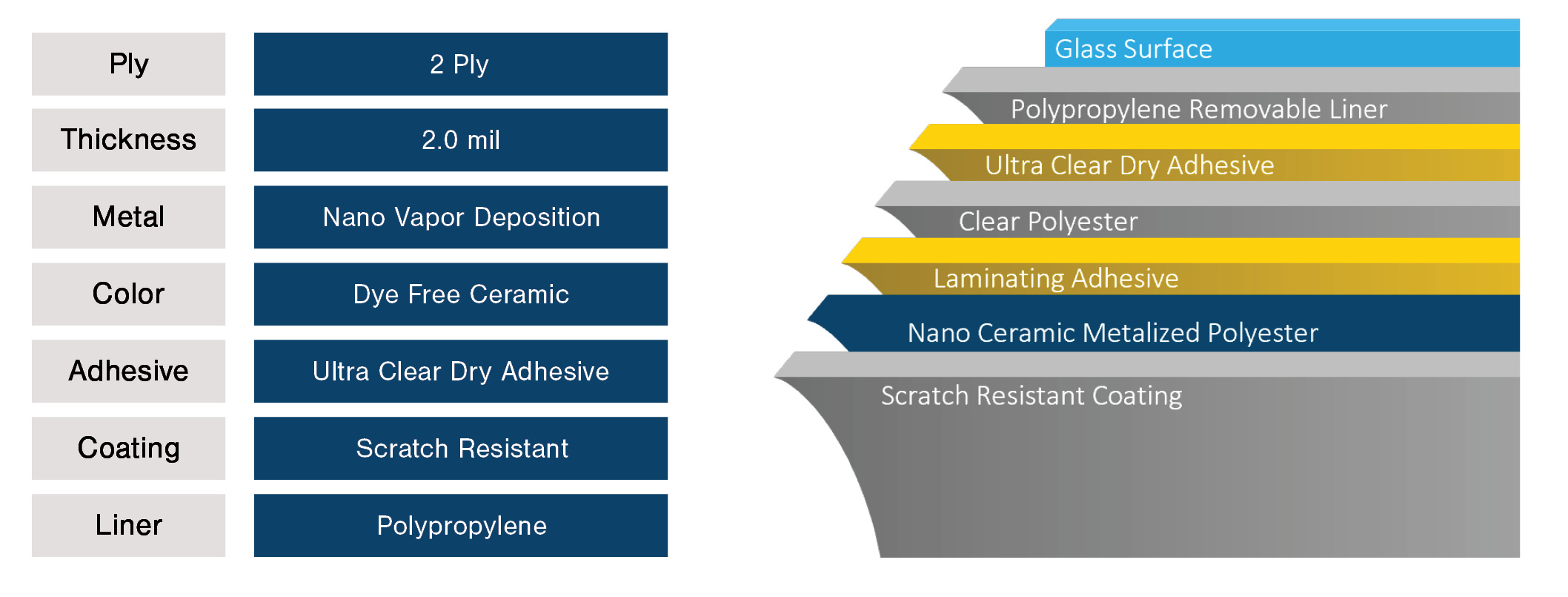
Commercial buildings of all types (office, hotels, universities, medical) have long used window film in their design to improve the comfort within the building envelope and to increase the building’s energy efficiency. Controlling the amount of solar energy that enters through a building’s windows makes interior spaces more habitable and can lower cooling bills. The same is true for homes.
Additional benefits of window film include:
Blocking harmful UV rays – most window films block some or most UV rays from entering through your windows.
Preventing fading – furniture fabrics and wood floors and furnishings can fade over time from the sun coming through windows. Fading occurs from a combination of UV rays, visible light and heat – all of which are reduced with the addition of window film.
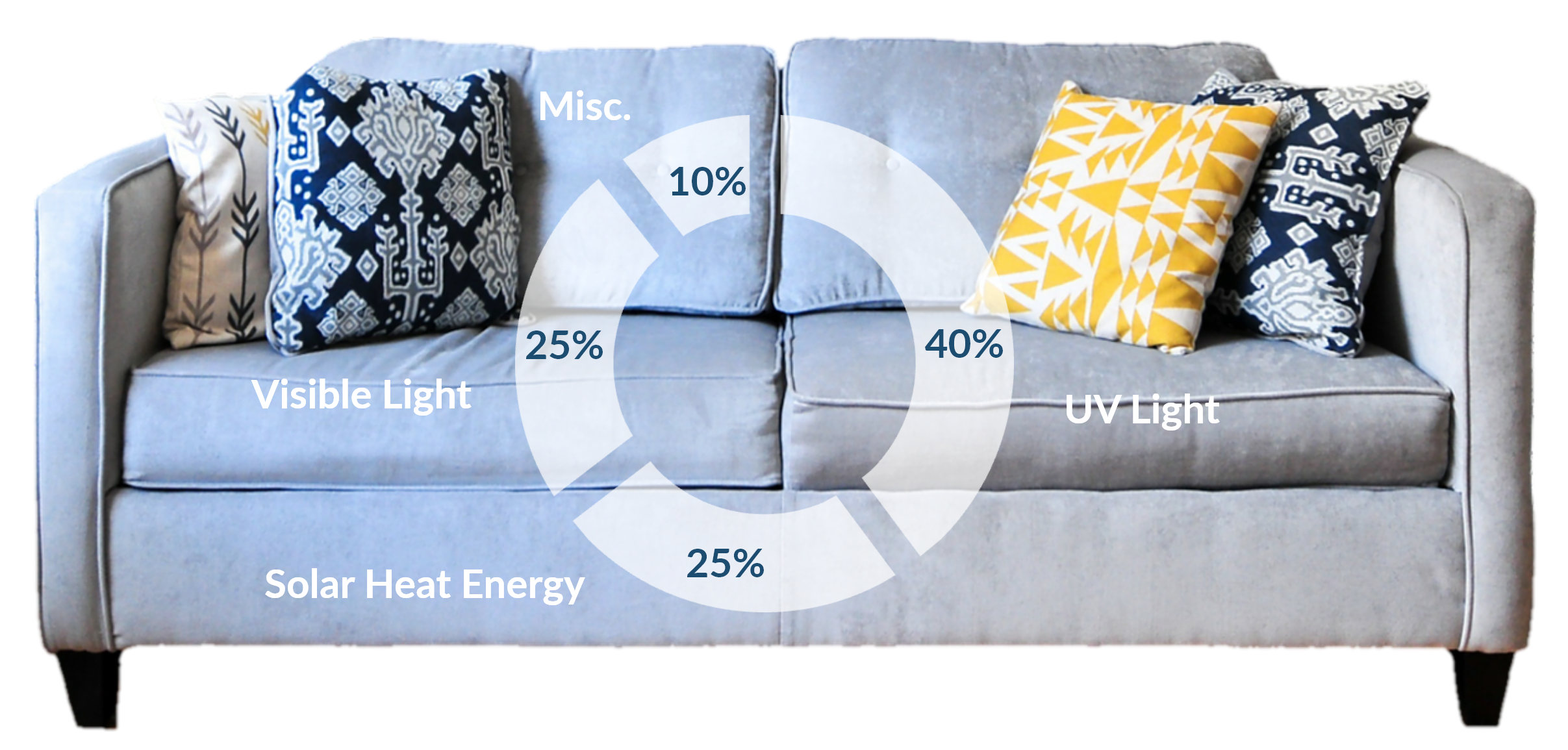
Controlling glare – glare happens when the light from the side of a task is brighter than the light coming from the task. Depending on the time of year (low angle of the winter sun in the Northern Hemisphere) or the orientation of your window (south or west) glare can present an issue in a room. Bright sunlight from windows can be especially troubling in a home office or TV/media room. Window film can cut the glare by reducing the amount of visible light entering a window.
Adding Daytime Privacy – Today’s home designs feature large windows to let in an abundance of natural light and views, but coupled with smaller lot sizes, comes privacy issues. Darker films like ComforTech™ 05 and 15 are great choices to add daytime privacy to your home.

Window film is a technologically advanced product that improves the performance of your existing windows. It’s a great upgrade for your home to improve the comfort of your space as well as save money on energy costs.
Installing window film yourself is an easy weekend project that will add value to your home. Concord Window Film’s ComforTech Ceramic Series film is the only professional grade window film available directly to DIY homeowners to install themselves. Learn more about ComforTech™ or shop now!